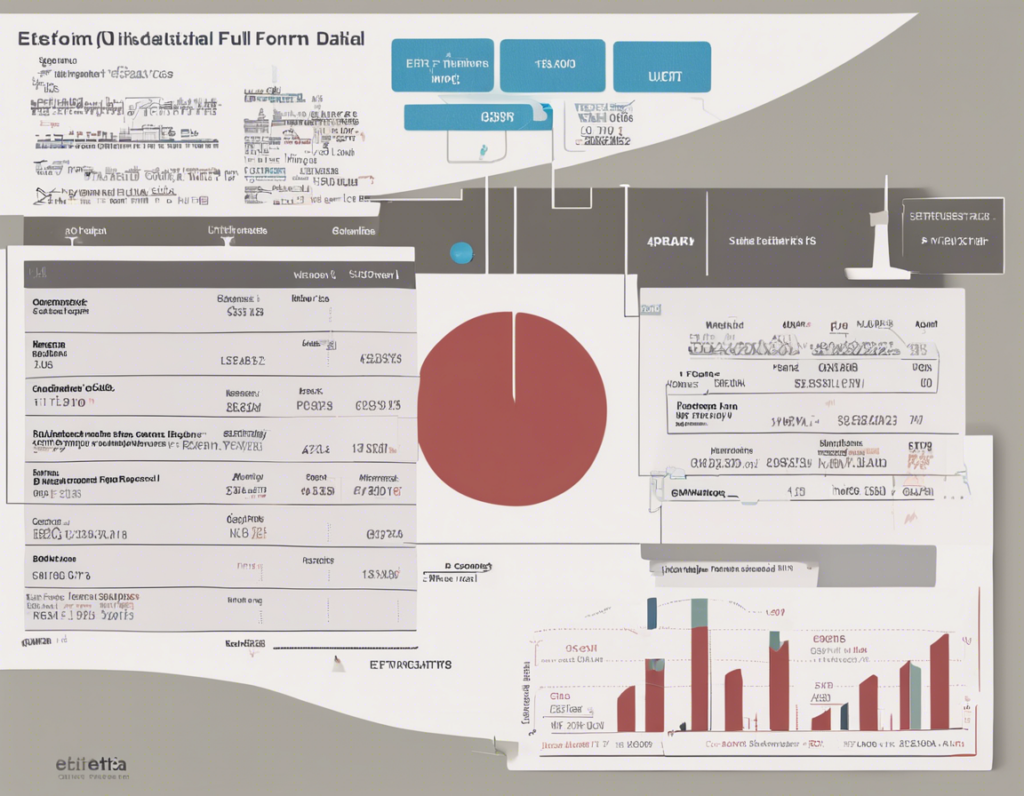In the world of finance and accounting, there are various financial metrics and terms that are crucial for understanding a company’s performance and financial health. One such term that often comes up in discussions and financial reports is EBITDA. Understanding what EBITDA stands for and how it is calculated is essential for investors, analysts, and business owners alike.
What is EBITDA?
EBITDA stands for Earnings Before Interest, Taxes, Depreciation, and Amortization. It is a financial metric that is commonly used to evaluate a company’s operating performance. EBITDA essentially provides a clearer picture of a company’s profitability from its core operations by excluding certain expenses that can vary between companies or are influenced by financial and accounting decisions.
How is EBITDA Calculated?
The formula to calculate EBITDA is:
EBITDA = Net Income + Interest + Taxes + Depreciation + Amortization
To get EBITDA, start with a company’s net income (or profit), then add back interest, taxes, depreciation, and amortization expenses.
Why is EBITDA Important?
-
Comparing Companies: EBITDA allows for a standardized comparison of profitability between companies since it eliminates the effects of different tax rates, leverage levels, and depreciation methods.
-
Operating Performance: It provides a clear view of a company’s operational performance and efficiency without the impact of external factors like interest expenses or tax rates.
-
Potential Investment: Investors often use EBITDA as a metric to assess a company’s potential for sustainable cash flows and profitability.
Limitations of EBITDA:
While EBITDA is a valuable metric in financial analysis, it does have its limitations:
-
Excludes Capital Expenditures: EBITDA does not account for capital expenditures which are crucial for maintaining and growing a business.
-
Ignores Working Capital: It does not consider changes in working capital, which can affect a company’s liquidity and financial health.
-
Ignores Non-Cash Charges: EBITDA ignores non-cash expenses like stock-based compensation, which can impact a company’s true financial performance.
EBITDA vs. Net Income:
While EBITDA provides a snapshot of a company’s profitability from operations, it is not a substitute for Net Income. Net Income is the bottom line of a company’s income statement after accounting for all expenses, including interest, taxes, depreciation, and amortization.
EBITDA Margin:
EBITDA Margin is a financial ratio that expresses EBITDA as a percentage of total revenue. It is calculated using the formula:
EBITDA Margin = (EBITDA / Total Revenue) x 100%
A higher EBITDA margin indicates that a company has higher profitability from its core operations.
How to Use EBITDA in Financial Analysis?
-
Comparative Analysis: Use EBITDA to compare companies within the same industry to evaluate their operational efficiencies.
-
Debt Analysis: EBITDA is often used in debt covenants to assess a company’s ability to meet its debt obligations.
-
Investment Decisions: Consider EBITDA when making investment decisions to understand a company’s underlying profitability.
-
Valuation: EBITDA is used in valuation metrics like Enterprise Value (EV) to EBITDA ratio to determine a company’s worth.
Frequently Asked Questions (FAQs):
1. Is a higher EBITDA always better?
Not necessarily. While a higher EBITDA generally indicates better operational performance, it’s essential to consider other factors like capital expenditures, working capital, and overall financial health.
2. Can EBITDA be negative?
Yes, EBITDA can be negative, especially for young or high-growth companies that are investing heavily in their operations. A negative EBITDA should be analyzed in conjunction with other financial metrics.
3. How do analysts use EBITDA in valuation models?
Analysts often use EBITDA multiples (such as EV/EBITDA) to compare companies and determine their valuation. EBITDA provides a standardized measure of operating performance for such comparisons.
4. Why is EBITDA criticized by some investors?
Critics argue that EBITDA can be manipulated by companies to present a more favorable financial picture as it excludes essential expenses like capital expenditures and debt payments.
5. Should EBITDA be the primary metric for evaluating a company’s financial health?
While EBITDA provides valuable insights into a company’s operational performance, it should not be the sole metric used for financial analysis. It is crucial to consider a range of financial indicators for a comprehensive assessment.
In conclusion, understanding EBITDA and its significance in financial analysis is vital for investors, analysts, and business stakeholders. While it has its limitations, when used appropriately alongside other financial metrics, EBITDA can offer valuable insights into a company’s operational efficiency and profitability.

